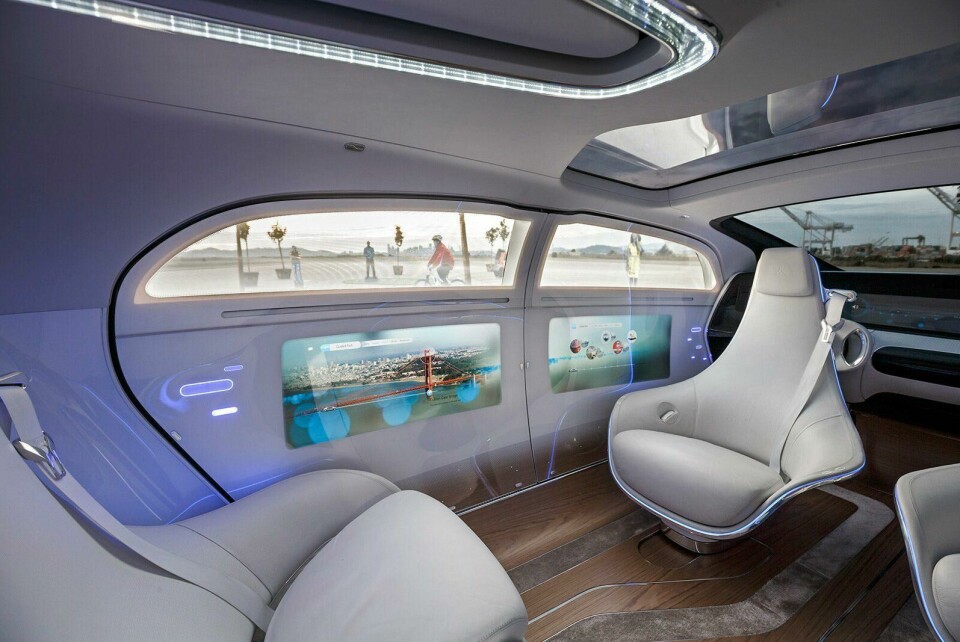
Designer Interviews: Sally Erickson Wilson, College for Creative Studies
Chair of colour and materials design programme at CCS talks the future of the automotive interior
Sally Erickson Wilson assumed the role of chair of the MFA programme of colour and materials design at CCS last year. She moved to the institution after serving as design manager for the North American fabric design team at automotive supplier Johnson Controls.

After graduating with an MA in textile design from the RCA in London, Erickson Wilson worked at PSA in Paris then Ghia in Turin where she worked on several concept vehicles including the Ford Focus and the Aston Martin Lagonda Vignale.
She then moved on to become chief colour and materials designer at Fiat, then for Ford in England and Michigan, and has also served as a colour and materials consultant.
Erickson Wilson also had prior teaching experience at CCS. She was an adjunct faculty member from 2005-2011 where she taught design theory among other courses.
We caught up with Sally during a busy mid-term season at CCS, and took the chance to get an educator’s take on the future of the automotive interior.
Car Design News We see so many new and exciting materials being developed these days. What, if any, of these new materials can we expect to see in the automotive interiors in the next decade?
Sally Erickson Wilson It is a great time for the development of new materials. Designers are excited to be exploring new options and the opportunity to work with suppliers who are new to automotive design. It’s necessary to keep in mind however the industry testing standards determine what materials are used in the interior of a car.
The automotive interior is one of the harshest environments for materials to endure – extremes of heat and cold, use and abuse by the consumer, and a warranty that guarantees they will last for a decade or more. Therefore, the materials that are used, from aluminium to plastics, and textiles to leather, tend to be very durable, and slow to change.
If we could accept a shorter lifespan for materials, perhaps with the idea of changing out components to refresh the interior of a car, we might see a wider range of materials put into place for interior components. Additionally, allowing vehicle occupants to participate in the process of design and personalisation is an interesting idea.

Citroën’s Aircross concept uses colour to great effect
CDN Colour is a critical part of automotive interior design, and, yet it seems to be the element most subject to changing trends. How do designers reconcile this ever-changing element with the need to create a product that has a lifespan of a decade or more?
SEW It is important to understand that in the design of the automotive interior, colour is not used in isolation, but in combination with other colours, materials, and textures. Here at CCS, and at automotive design studios, there is a dedication to seeing colours as interacting with each other, in the classic Joseph Albers sense.
The automotive interior is conceived in a more holistic manner, with colour, texture and material carefully crafted and combined to produce an emotional response and to connect to greater truths about the overall design. CMF designers need to be good at managing a lot of different components and design elements simultaneously, applying colour to interiors and exteriors can be challenging but done well it can be the cornerstone of creating the correct response.
CDN Have there been colours that seem timeless or perennial favourites?
SEW Certainly there are colours that consumers tend to like year after year. But it is also important to acknowledge that certain colours can express an ethos and history of an automotive brand.

Mercedes F015 has set the tone for autonomous interior design in 2015
CDN As we look to the future of the car, we see a gradual transition to autonomy. Can we expect radically different interiors in the autonomous car of the future?
SEW It’s my opinion that the autonomous car represents a new breed of automotive transportation- not necessarily a replacement for the manual-driven cars we have now. There’s no reason they cannot exist together on the roads. And new ownership models also must be taken into account as well. Perhaps autonomous cars will fit best into a car-sharing ownership scheme.
As for interiors, in the autonomous car, the steering wheel may not be necessary. The interface with controls would be critical. Voice commands? Screens? It is still an open question.
Also, perhaps all seats do not necessarily need to face forward… we can certainly rethink seating configurations.

Tesla Model S is the most ‘cellphone on wheels’ car on sale right now
CDN Media and connectivity is becoming an integral part of the automotive interior, so much so that the modern car is often called a cell phone on wheels. Do you see this trends increasing in the next decade, or will consumers grow tired of these elements?
SEW I think the technologies are so embedded in the modern car that they will be with a permanent feature of the car. I doubt consumers will grow tired of them, although they can be frustrated with the HMI, which is not as user-friendly as the cell phone.
Perhaps some will long for a more ‘pure’ driving experience, with minimal media or connectivity. For these drivers maybe an older used vehicle or classic sports car might be the answer.

Nissan Teatro for Dayz launched at Tokyo Motor Show
CDN Touchscreens are rapidly becoming standard on all cars, even economy offerings. Tesla offers a large central touchscreen, perhaps the best on a production car.
The Nissan Teatro for Dayz car shown at the Tokyo Motor Show has multiple screens all over the interior, even on the seats; it’s almost a caricature. The Mercedes F015 concept also shows many screens, although more subtly presented. What is the right balance of screens in the modern automotive interior?
SEW It is an evolving design issue – a challenge for interface and entertainment designers. It can be a disruption for the traditional balance of colour and materials we’ve previously discussed. The Tesla screen seems well integrated into its IP, the Teatro is designed for a generation of digital natives. It is certainly provocative. The Mercedes F015 is more subtle in its approach, and perhaps is the better balance. But the design implications of all these screens is certainly a significant one.
CDN Even with all the challenges involved, it seems that the opportunities that are presented with the rapidly evolving automobile may usher in a golden age of interiors. Do you think this is possible?
SEW Absolutely!



